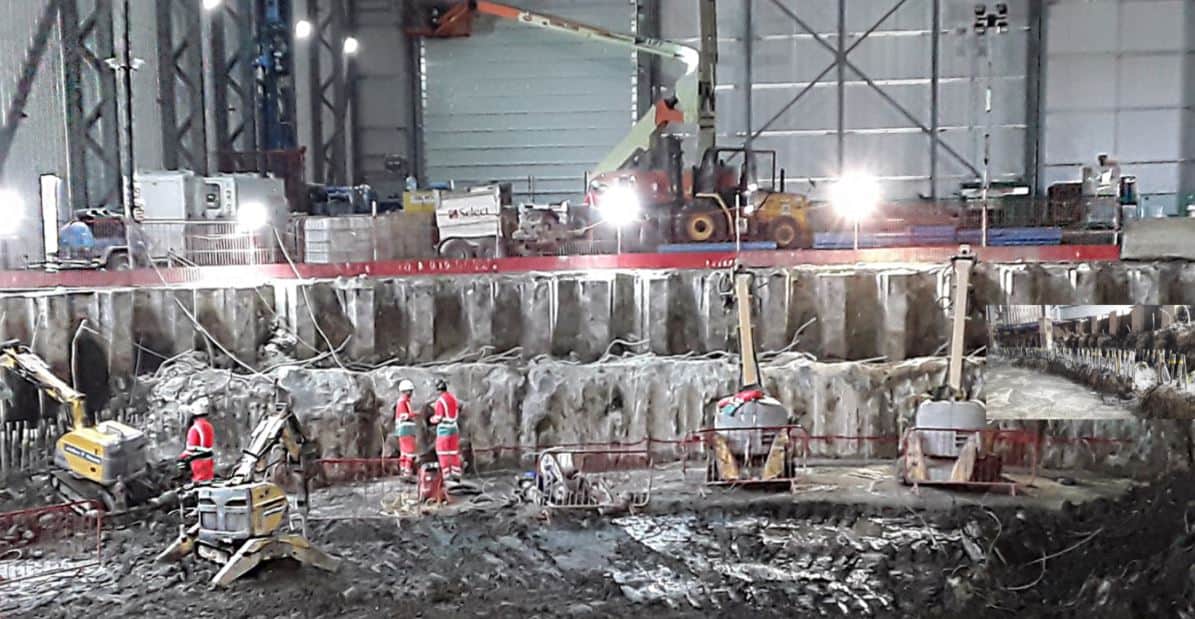Thames Tideway Tunnel – Central Kirtling Street
Thames Tideway Tunnel / FLO (Ferrovial Laing O’Rourke) JV

5 months

£140k

Nine Elms, London
Location & Overview
The Ferrovial Agroman and Laing O’Rourke joint venture involved building the central section of the Thames Tideway Tunnel, as part of London’s new sewer system, for a value of £746m. Located on the southern bank of the River Thames and measuring 12.7 kilometres in length, it is the largest of the tunnel’s three sections. This site comprises four areas of land as well as extending into the Thames and will be used to drive the main tunnel to Carnwath Road Riverside in the west and Chambers Wharf in the east.
Work, Challenges & Solutions
Carrying out the Ferro scanning of each area, we marked the de-bonded rebar within the concrete to avoid clashes with the follow-on chasing, drilling, and bursting procedures.
We cut the scored line using dustless chasing systems to a maximum depth of 40mm, avoiding the rebar, which needed to be retained, giving an indicative line of break out.
Diamond drilling 112mm diameter x 800mm deep holes ensured no clash with the de-bonded rebar and no penetration of the sheet piles beyond the diaphragm wall.
All cores were extracted, enabling the bursting process, which was applied to release the upper 1.2m of concrete for removal.
With dust suppression systems in place, Brokk 400 and 330s were used to break out the released concrete, followed by the concrete retaining the rebar.
The breaking of the Diaphragm wall achieved a finish as near to the tolerances of between 0-20mm as possible.
The works were carried out to maintain the integrity of the sheet piles, D. Wall reinforcement bar and inclinometers.
Arisings were taken from the D-wall reinforcement and removed from site.
Achievements
Use of the Ferrous scanner to pinpoint concrete clad rebar, enabling precision cutting.
A dustless chasing system was used to successfully reduce air pollution and quiet techniques decreased noise pollution significantly.

